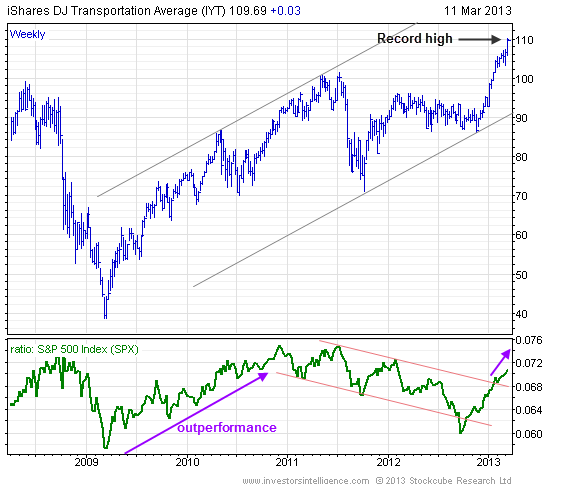Driving Growth Through Collaboration: Best Of Bangladesh In Europe (2nd Edition)

Table of Contents
Identifying Key Opportunities for Bangladeshi Businesses in Europe
Successfully entering the European market hinges on a thorough understanding of its nuances. This involves careful market research, grasping consumer preferences, and navigating complex trade regulations. Effective Bangladesh-Europe collaboration starts here.
Market Research and Analysis
Before venturing into any European market, comprehensive market research is crucial. This involves identifying lucrative niches where Bangladeshi products and services possess a competitive advantage. Consider utilizing:
- Industry-specific reports: Analyze reports focusing on textiles, ready-made garments (RMG), IT, and other sectors relevant to Bangladeshi businesses.
- Market research agencies: Leverage the expertise of professional agencies specializing in European market analysis.
- Online databases: Explore resources like Eurostat (the statistical office of the European Union) and national statistical offices of individual European countries for vital market data.
- Competitor analysis: Study your competitors' strategies, pricing, and market share to inform your own business plans.
Understanding European Consumer Preferences
European consumer preferences vary significantly across countries and regions. Adapting to these nuances is essential for success. Consider:
- Product localization: Customize product packaging, labeling, and even product features to suit specific European tastes and regulations.
- Marketing adaptation: Develop culturally sensitive marketing campaigns that resonate with the target audience.
- Distribution channels: Choose suitable distribution channels – from online marketplaces to traditional retail networks – depending on your target market and product.
- Cultural sensitivity training: Invest in training for your team to improve cultural awareness and effective communication with European partners.
Navigating Trade Regulations and Compliance
The EU has stringent trade regulations and compliance requirements. Ignoring them can lead to significant setbacks.
- Regulatory compliance: Familiarize yourself with key regulations such as REACH (Registration, Evaluation, Authorisation and Restriction of Chemicals) and RoHS (Restriction of Hazardous Substances) that apply to your products.
- Customs procedures: Understand the necessary import and export procedures, including documentation requirements and tariffs.
- Legal counsel: Seek legal expertise to ensure compliance and avoid potential legal issues.
- EU trade websites: Utilize official EU websites and resources to obtain up-to-date information on trade regulations and procedures.
Building Successful Collaborative Partnerships in Europe
Building strong collaborative partnerships is the cornerstone of successful market entry. This requires a systematic approach, focusing on finding the right partners, fostering strong communication, and establishing robust agreements.
Finding the Right European Partners
Identifying suitable partners – distributors, retailers, or investors – is a crucial step.
- Networking events: Actively participate in relevant trade fairs and industry conferences to connect with potential partners.
- Business associations: Leverage the resources of business associations and chambers of commerce to identify potential partners.
- Online platforms: Use online platforms and business directories to search for potential collaborators.
- Due diligence: Conduct thorough due diligence on potential partners before entering into any agreement.
Effective Communication and Cultural Understanding
Clear communication and cultural sensitivity are vital for successful partnerships.
- Language proficiency: Ensure that you have access to interpreters or translators if needed.
- Cultural training: Invest in cross-cultural communication training for your team.
- Building trust: Cultivate strong relationships based on trust and mutual respect.
- Active listening: Practice active listening to understand your partners' perspectives and needs.
Structuring Collaborative Agreements
Well-defined contracts are paramount to protect the interests of all parties involved.
- Legal counsel: Engage legal professionals to draft and review collaborative agreements.
- Key contract clauses: Ensure the agreement clearly defines roles, responsibilities, intellectual property rights, and dispute resolution mechanisms.
- Clear payment terms: Establish clear and transparent payment terms to avoid future conflicts.
- Exit strategy: Include a clearly defined exit strategy in case the partnership doesn't work out as planned.
Leveraging Technology for Enhanced Collaboration
Technology plays a crucial role in facilitating seamless collaboration across geographical boundaries.
Utilizing Digital Platforms for Communication and Collaboration
Digital tools can greatly enhance communication and project management.
- Video conferencing: Utilize platforms like Zoom or Skype for efficient communication.
- Project management tools: Employ tools like Asana or Trello for streamlined project management.
- Cloud storage: Use cloud storage solutions like Google Drive or Dropbox for shared access to documents.
- Secure communication channels: Ensure that all communication channels are secure and protect sensitive information.
E-commerce and Digital Marketing Strategies
E-commerce presents immense opportunities to reach European consumers.
- SEO optimization: Optimize your website and online content for search engines to attract European customers.
- Social media marketing: Utilize social media platforms like Facebook, Instagram, and LinkedIn to reach your target audience.
- Online marketplaces: Explore the opportunities presented by prominent e-commerce platforms like Amazon and eBay.
- Paid advertising: Consider paid advertising campaigns on search engines and social media platforms.
Conclusion: Fostering Collaborative Growth: The Future of Bangladesh in Europe
Driving growth through collaboration is not merely a strategy; it's a necessity for Bangladeshi businesses aiming for success in the European market. This article highlighted the importance of thorough market research, building strong partnerships, and leveraging technology to achieve this growth. By understanding European consumer preferences, navigating regulatory hurdles, and utilizing digital tools effectively, Bangladeshi businesses can unlock significant opportunities. We urge you to explore the resources available through the "Best of Bangladesh in Europe" initiative and embrace the opportunities for collaborative growth. The future of Bangladesh in Europe hinges on continued collaboration and a commitment to strategic partnerships. Let's work together to build a stronger, more prosperous future for both regions.

Featured Posts
-
 Crisi Dazi Ue Impatto Sulle Borse E Possibili Contromisure
May 24, 2025
Crisi Dazi Ue Impatto Sulle Borse E Possibili Contromisure
May 24, 2025 -
 Investing In The Amundi Dow Jones Industrial Average Ucits Etf Nav Considerations
May 24, 2025
Investing In The Amundi Dow Jones Industrial Average Ucits Etf Nav Considerations
May 24, 2025 -
 Annie Kilner Runs Errands After Kyle Walkers Night Out
May 24, 2025
Annie Kilner Runs Errands After Kyle Walkers Night Out
May 24, 2025 -
 H Nonline Sk Zavazny Pokles V Nemeckom Hospodarstve A Jeho Dopad Na Trh Prace
May 24, 2025
H Nonline Sk Zavazny Pokles V Nemeckom Hospodarstve A Jeho Dopad Na Trh Prace
May 24, 2025 -
 Faiz Indirimi Sonrasi Avrupa Borsalarindaki Dalgalanmalar Yatirim Stratejileri
May 24, 2025
Faiz Indirimi Sonrasi Avrupa Borsalarindaki Dalgalanmalar Yatirim Stratejileri
May 24, 2025
Latest Posts
-
 Extreme V Mware Price Hike At And T Reveals 1 050 Increase From Broadcom
May 24, 2025
Extreme V Mware Price Hike At And T Reveals 1 050 Increase From Broadcom
May 24, 2025 -
 U S Senate Introduces Resolution Recognizing Strong Canada U S Ties
May 24, 2025
U S Senate Introduces Resolution Recognizing Strong Canada U S Ties
May 24, 2025 -
 Broadcoms Proposed V Mware Price Increase At And T Highlights 1 050 Jump
May 24, 2025
Broadcoms Proposed V Mware Price Increase At And T Highlights 1 050 Jump
May 24, 2025 -
 Bipartisan Senate Resolution Honors Canada U S Partnership
May 24, 2025
Bipartisan Senate Resolution Honors Canada U S Partnership
May 24, 2025 -
 1 050 Price Hike At And T Sounds Alarm On Broadcoms V Mware Deal
May 24, 2025
1 050 Price Hike At And T Sounds Alarm On Broadcoms V Mware Deal
May 24, 2025
